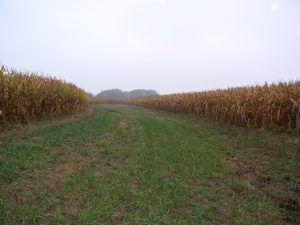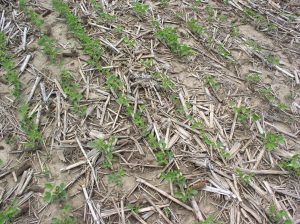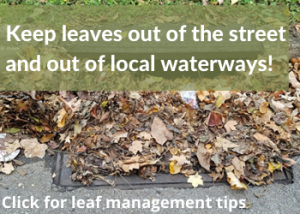Water is one of those 6 natural resources that is imperative to sustainability. The Natural Resources Conservation Services (NRCS) strives to protect soil, water, animals, plants, air, and humans (SWAPA+H). Water quality can be affected both positively and negatively by different agricultural practices. A healthy soil can act as a water filter, remove pollutants, and improve water quality. Pollutants in water can come from agricultural land and enter our streams or leech into underground aquifers. Sediment (soil particles and debris) and nutrients (from organic and chemical sources) are the two major water pollutants that come from agricultural land.
Land management and conservation practices that focus on conserving natural resources can also enhance production and reduce sediment and nutrients from being lost in agricultural runoff. The NRCS provides financial and technical assistance to landowners and farm managers to manage the land using a variety of conservation practices that will improve water quality and increase overall efficiency in long-term land management. To find out more about NRCS, visit www.nrcs.usda.gov. Visit the Illinois NRCS website at www.il.nrcs.usda.gov to receive up-to-date state-wide information on conservation topics including programs, news, data, and more. The conservation practices listed below are common management strategies that Mclean County farmers use to improve water quality.
Planting a variety of native and introduced species, such as grasses, legumes and forbes, can hold the soil in place, preventing soil erosion and the transportation of soil to water bodies. With less soil disturbance on these sites with permanent cover, root systems are allowed to grow and break-up compaction. This allows more pore space for water to filter and percolate through the soil instead of running off. The vegetated cover also slows down water during storm events causing sediments to drop out of the water. Perennial plantings with minimum soil disturbance also provide forage and shelter habitat for wildlife.
Filter Strips
Vegetated strips adjacent to water bodies and streams can improve water quality by filtering sediment and nutrients that would normally runoff from fields and may contaminate water systems. The vegetation, such as grasses, slows the runoff water and allows contaminants to deposit in the filter strip before entering the water body/stream.
Grassed waterways

Photo Courtesy of McLean County NRCS
Grass strips in fields located in concentrated flow areas can reduce soil erosion by slowing down water and conveying water off fields. The water leaving the waterway will be moving at a lower velocity and will be less erosive to land beyond the outlet. Waterways improve water quality by conveying water safely and in a non-erosive manner out of the field’s concentrated flow area.
No till/Strip till

Photo courtesy of McLean County NRCS
Reduced tillage decreases agricultural runoff and improves the soil’s ability to filter water. Undisturbed soil is more stable and maintains pore space to allow water to filter. No-till management also allows organic matter, which is important to productivity, to build up in the soil. Without soil disturbance microbial life will increase and soil structure will be maintained.
Nutrient Management
Using site specific nutrient recommendations based on soil needs is effective nutrient management. Soil samples are tested in a lab to determine what nutrients are available to the plants and those that may need to be replenished to maximize productivity. The soil test results can be utilized along with the next year’s crop nutrient needs to determine how much fertilizer should be applied to a field. This conservation practice focuses on the best economic return of fertilizer applied compared to crop yields, while minimizing chemical contamination to water bodies.
Drainage water management (DWM) is another practice that helps manage nutrients in the soil as well as increase water availability for crop fields. This practice allows land managers to control the discharge of tile drainage using a dossier valve, which controls the subsurface water elevation of the field. When DWM is managed properly, nutrient and pesticide loads in the drainage systems can be reduced in downstream receiving waters, crop vigor and yield can be increased due to increased water availability, and seasonal wildlife habitat can be provided offering surface soil saturation and shallow flooding during the non-cropped season.
Wetlands
Wetlands are water-holding areas that contain saturated soils and water-loving plants. Agricultural runoff can drain into a wetland to prevent contaminants from moving further downstream. Plants will use the nutrients and sediment that is deposited. The water that is intercepted by the wetland is treated through natural processes, allowing water that drains from the wetland to be cleaner when entering the water systems downstream. Wetlands also provide superb wildlife habitat.
Riparian Buffer
Riparian Buffer zones are typically made of strips of grasses, then shrubs, and then trees adjacent to water bodies and streams. These zones work like filter strips in that they allow sediment, nutrients, pesticides and other contaminants in runoff water to deposit in the buffer zone before entering water bodies and streams. These zones can also help water filter through the soil and slow flooding. Riparian buffers mimic natural landscape features and provide wildlife habitat and cover, while also protecting fish and overall ecology.




